
Project by Kalyani Tupkary. Website built by Jon Packles.
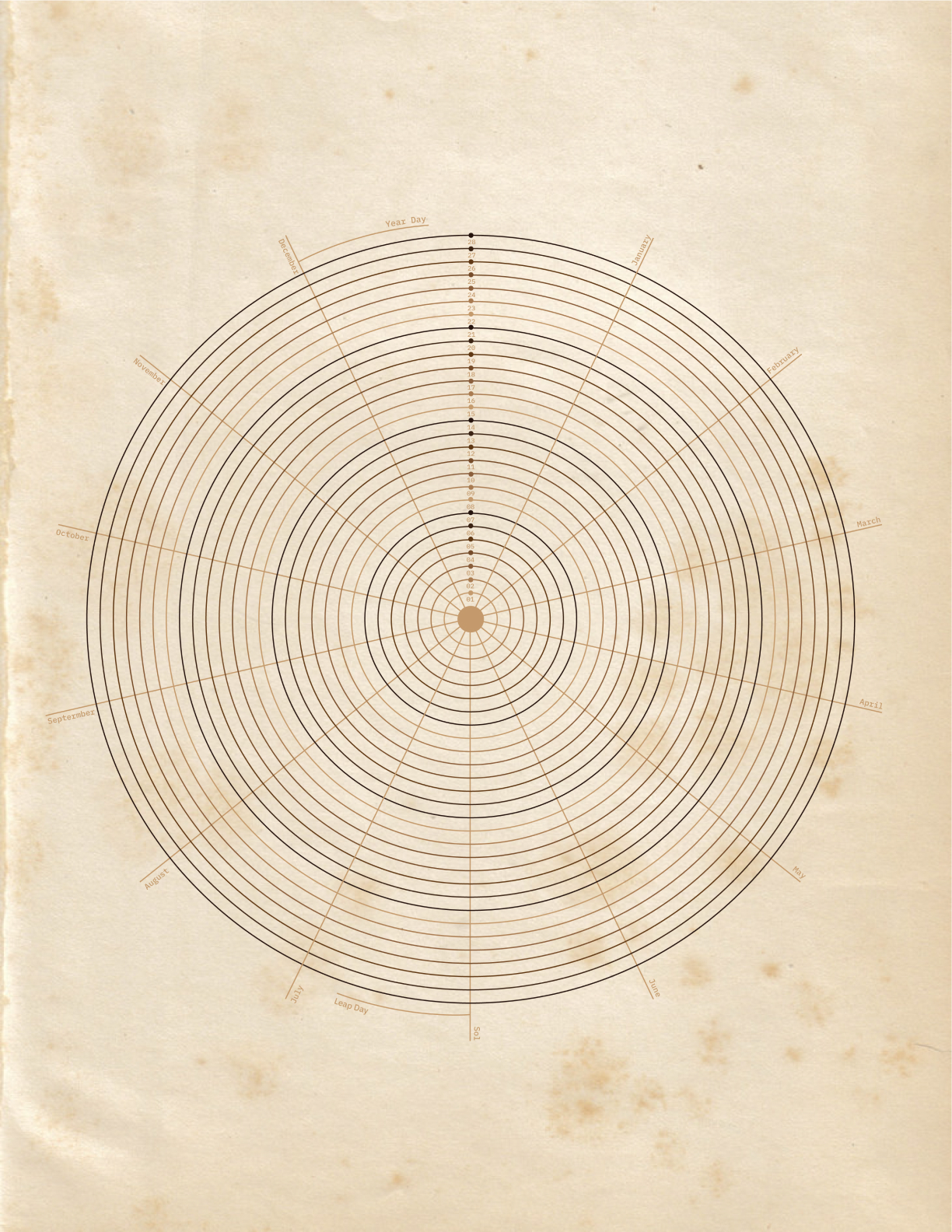
Here every year is the same - with 13 months of 28 days each.
Every date is fixed to the same weekday. So, the 17th is always
a Tuesday.
Listen to the Voicemail
In a scalding-hot argument against the 12-month calendar, a
September 1927 issue of The Outlook proclaimed: 'A month is a
wholly irrational division of time. It has no relation to
anything in astronomy, or human experience. It is an inaccurate
and varying measure of time that is a constant annoyance in
business and a misleading unit in science. It has no religious
significance. A month is nothing but just a bad habit.'
The International Fixed Calendar is a
solar calendar
with 13 months of 28 days each. It is a
perennial calendar
as every date is fixed to the same weekday every year. Momentum
behind the International Fixed Calendar, a 13-month calendar
with 28 days in each month and a leftover day at the end of each
year (it also followed the Gregorian rules with regards to Leap
Years), was never stronger than in the late 1920s. Similar to
Auguste Comte's
positivist calendar
(created in 1849), this particular 13-month invention came from
the mind of Moses Cotsworth, a North Eastern Railway advisor
bothered by inexplicably varying monthly earnings over the
traditional 12-month period. In 1902, driven by a desire to
simplify the ‘irrational calendar’ Moses B Cotsworth presented a
solar calendar for calendar reform. His solar calendar had 13
months of 28 days each. Every date was fixed to the same weekday
every year. Every week starts with a Sunday and ends with a
Saturday. Cotsworth's plan quickly gained popularity among
businessmen, especially in transportation and logistics. His
biggest ally, however, was photography pioneer and Kodak
founder, George Eastman. Impressed by the symmetry of this
hyper-rational calendar, George Eastman adopted it for use in
his Eastman Kodak Company 1928 to 1989 while the rest of the
world followed the Gregorian calendar.
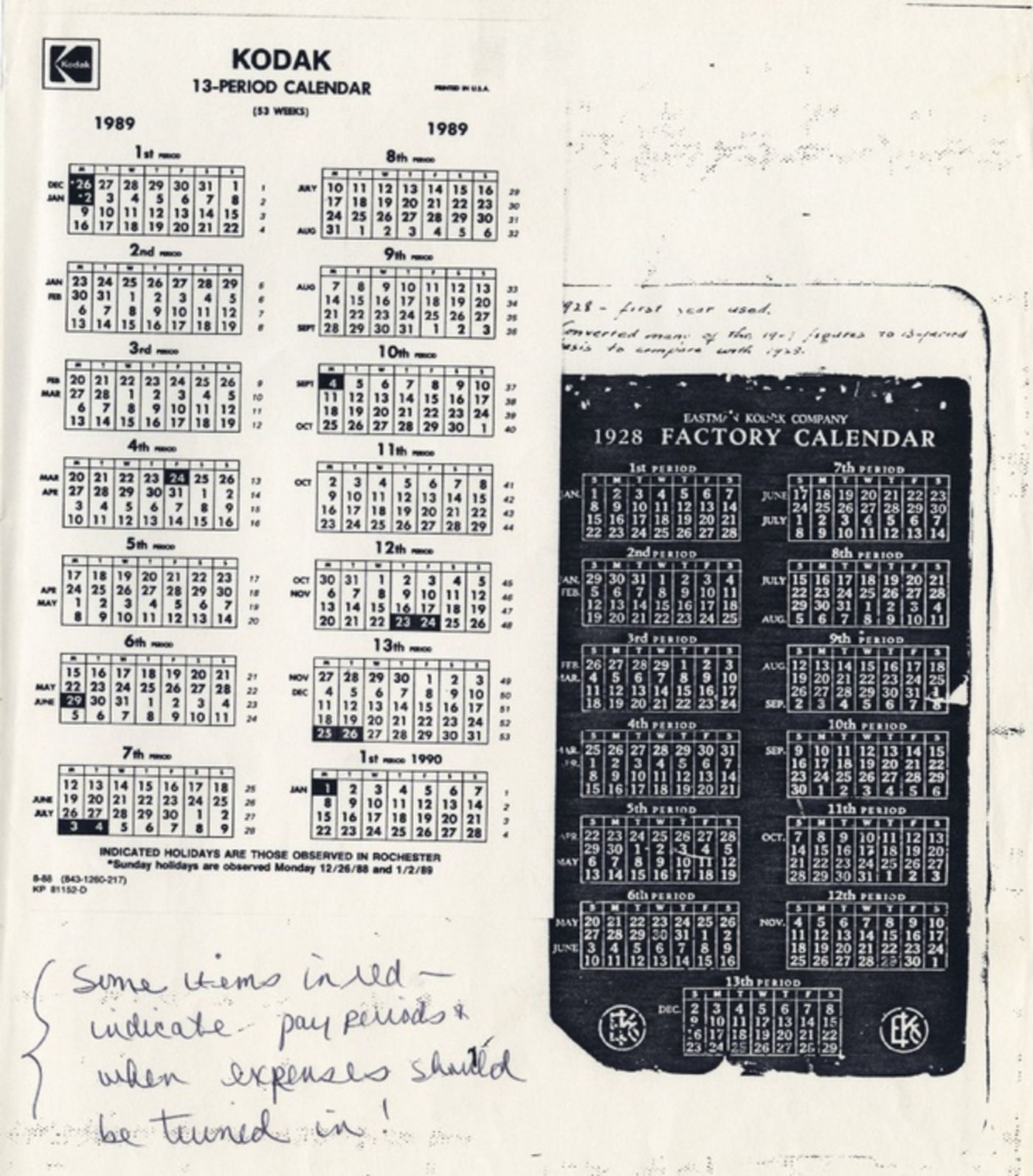
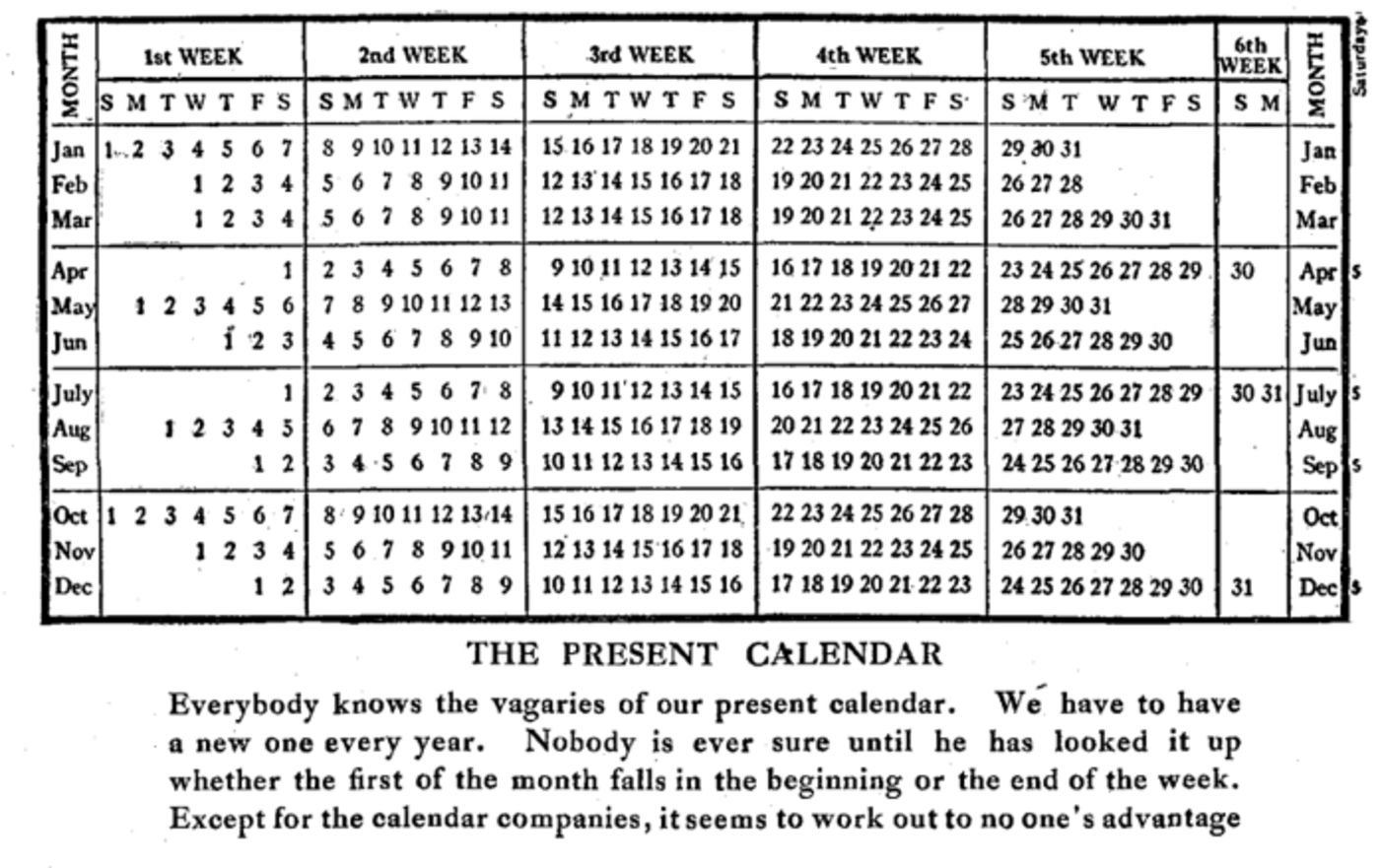
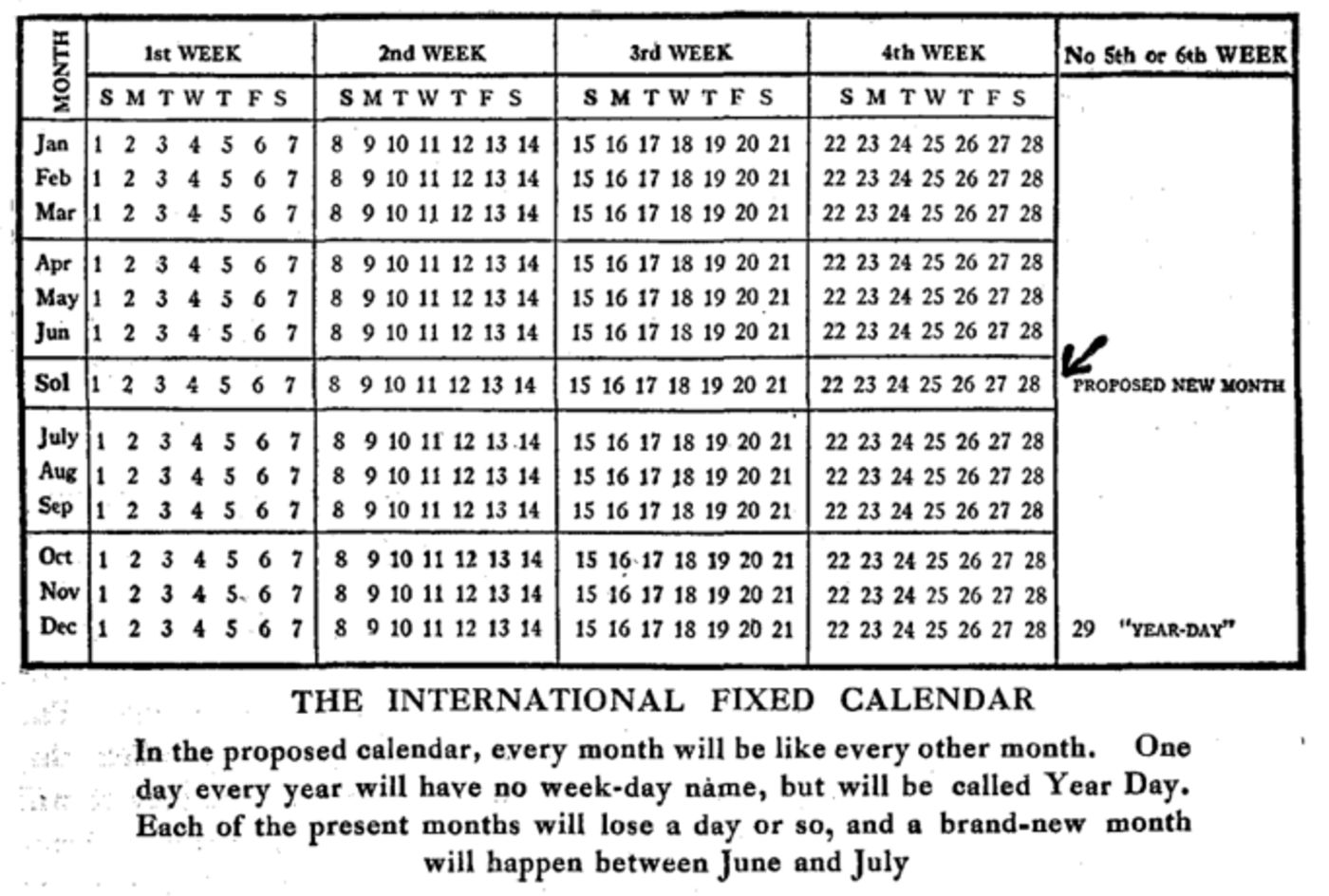
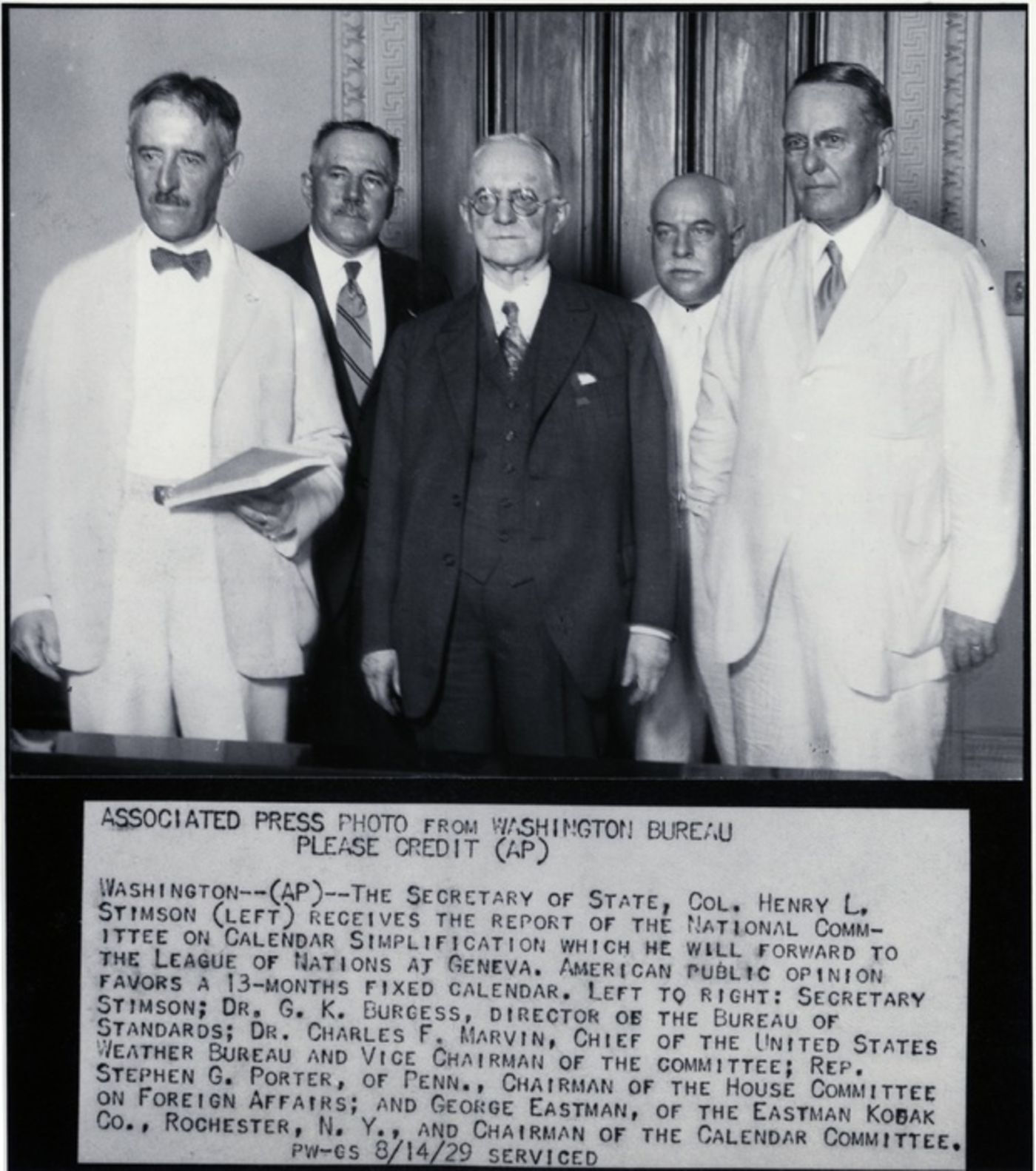
- Image 1: The 13-month calendar as used by Kodak in 1928 and 1989. Courtesy the George Eastman House
- Image 2, 3: A 1927 issue of "The Outlook" compares the Gregorian calendar to the International Fixed Calendar. Courtesy George Eastman House
- Image 3: Col. Henry Stimson (left) holds the report of the National Committee on Calendar Simplification while standing next to George Eastman on August 14, 1929. AP, George Eastman House
- Reference: Byrnes2014, Mark. “The Death and Life of the 13-Month Calendar.” Bloomberg.com. Bloomberg. Accessed December 6, 2020. https://www.bloomberg.com/news/articles/2014-12-11/the-death-and-life-of-the-13-month-calendar.